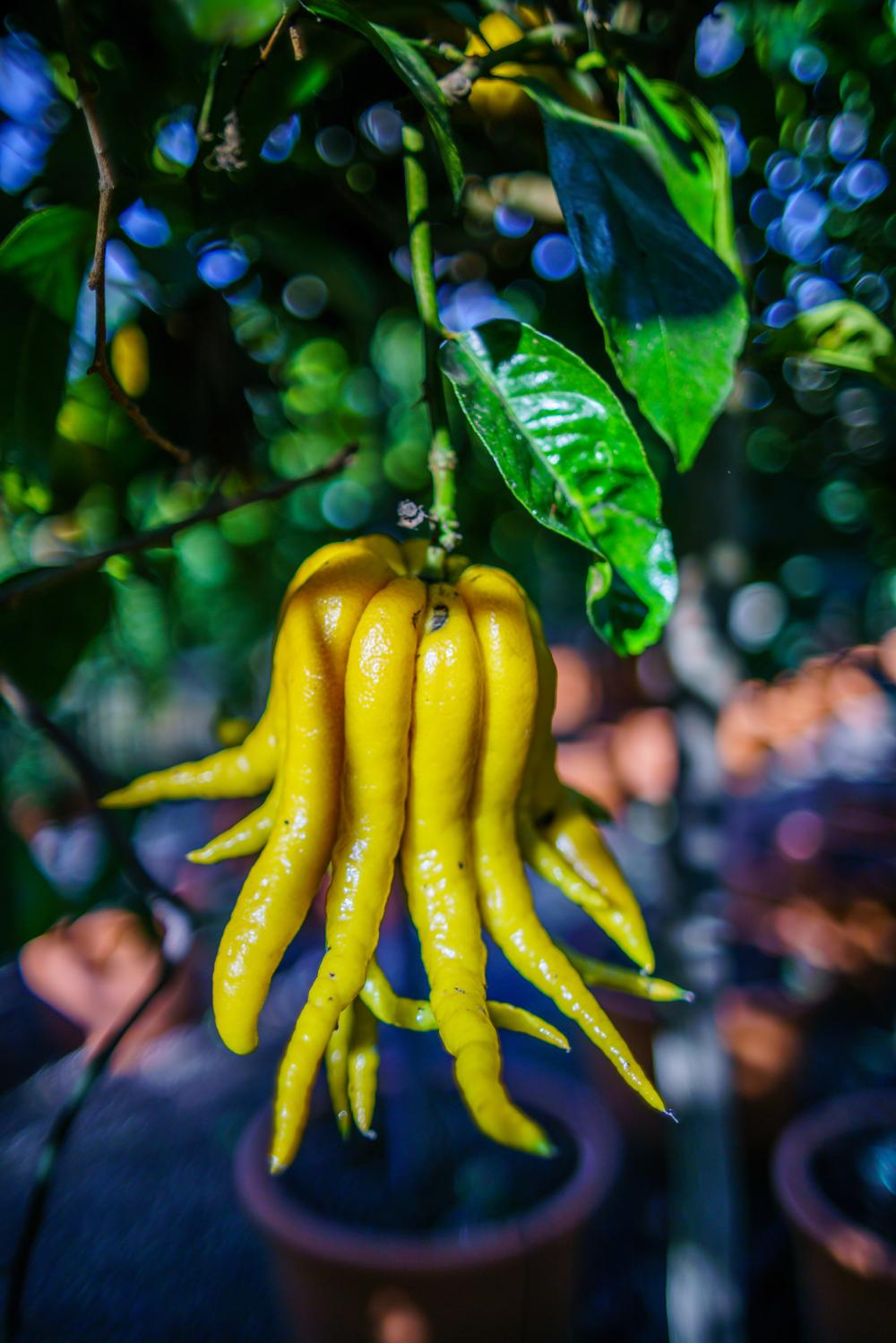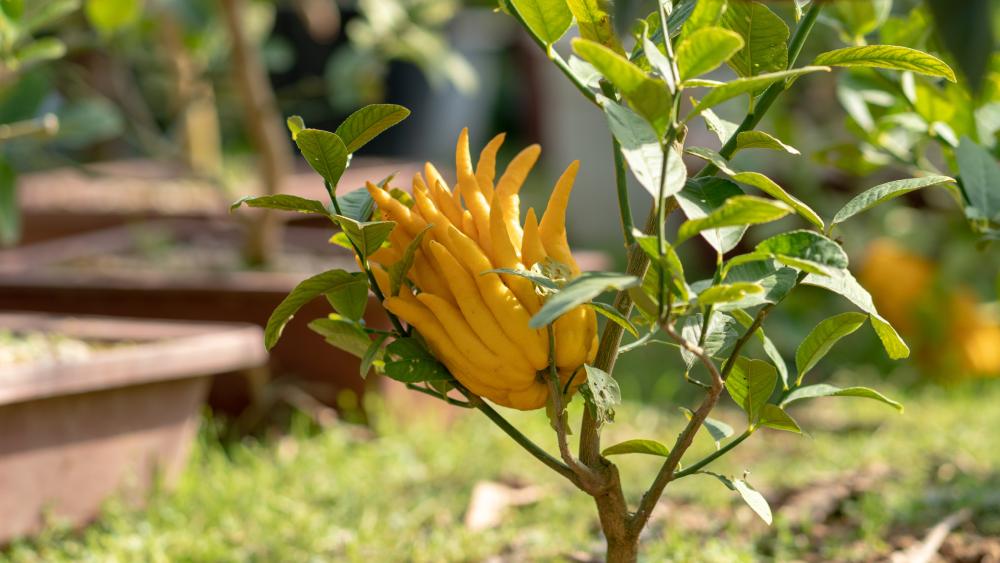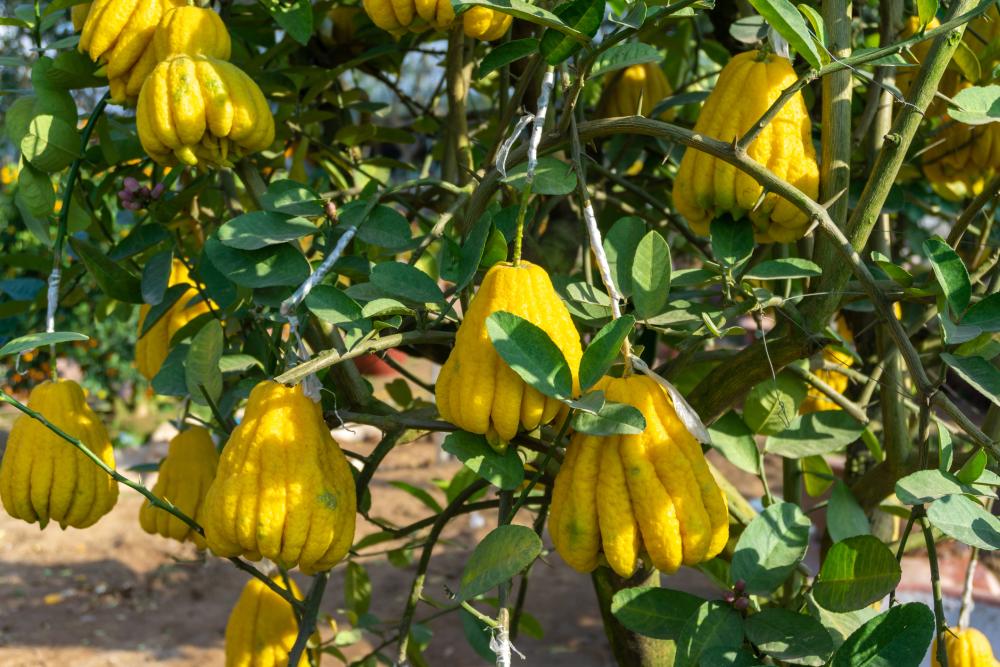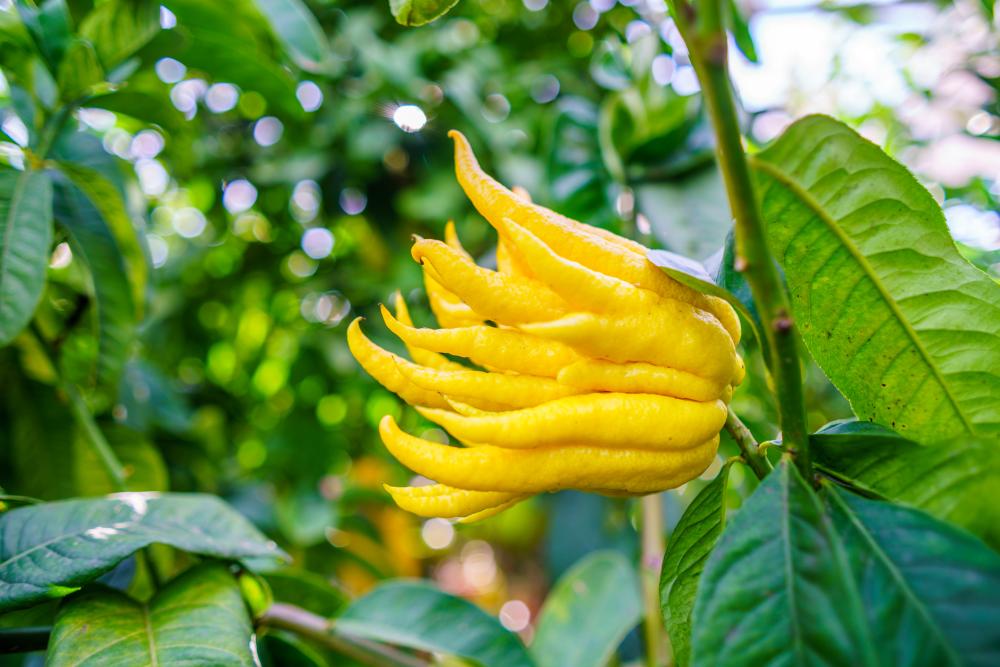Buddha’s Hand Tree Care – How To Grow And Harvest Buddha’s Hand Citron
Buddha’s hand tree is one of the original citron trees still in existence. Citron is the granddaddy of the citrus fruits you see in the supermarket today. And while oranges, grapefruits, limes, and other citrus trees went through hybridization, either natural or artificial, the citron trees remained unchanged for hundreds of thousands of years.
But the Buddha’s hand tree is not just another citron with a thick rind and fragrant flesh. Its fruit also takes some unusual and sometimes eerie shapes. The end of the large fruit branches out into finger-like shapes and gives it the appearance of a giant hand.
It’s an exotic tree in every sense of the word. And the chances of seeing its bizarre-looking fruits in the market are next to none. Yet you can grow it in your garden and enjoy its lush canopy and delicious fruits. Read on to find out how to grow and take care of the Buddha’s hand citron.
Buddha’s Hand Tree At a Glance
In nature, there are a few varieties of Buddha’s hand tree (Citrus medica var. sarcodactylis) and the difference between the varieties is in how the fruit is shaped. Some fruits have open fingers reaching everywhere while others have a fruit that looks like a tight fist. The dangling ripe fruits look like yellow gloves reaching for something on the ground.
Much like many other citrons, the Buddha’s hand tree is actually a shrub or a small tree at best. The mature tree can reach 16 feet at most in the right conditions. It branches out haphazardly much like the fingers on its fruits and its canopy takes an irregular shape. Moreover, the branches and twigs are covered with sharp thorns, so you always have to be on your guard when approaching the tree.
The leaves are light green and rather big for such a small tree. Each leaf is oblong and can grow to up to 6 inches long. But the flowers are a different story. They’re usually white with purple patterns and emit a faint fragrance. After pollination, the purple fruits emerge between November and December of each year.
As the fruit reaches maturity, the fingers branch out and turn into bright yellow. Most of the body of the fruit is just a thick rind with no flesh inside.
Uses of Buddha’s Hand Tree
As a native of the temperate regions of Asia, Buddha’s hand tree has featured prominently in Asian cuisines for its aroma, in traditional medicine, and also offered some cosmetic benefits. Here are some of these uses.
- In China, perfumes are extracted from the ripe fruits of the tree and used as air fresheners and to keep the clothes smelling fresh.
- In Buddhist temples, the fruit is valued as a precious offering, and visitors to the temples always present it at the feet of the Bodhisattva.
- The Chinese culture cherishes the fruits of the tree as a symbol of happiness and prosperity.
- The tree is valued also for its ornamental properties and people grow it in their gardens or as a potted plant.
- The thick rind of the fruit offers aromatic zest that adds exotic flavors to stews, baked dishes, and desserts.
- If you look hard enough, you can find vodka with citron flavors. It’s quite popular in the eastern regions of Russia.
- In traditional medicine, the rind of the fruit is sliced, dried, and offered as a tonic.
How to Grow Buddha’s Hand Tree
Let me get one thing out of the way. It’s not easy to grow the Buddha’s hand tree. Not because the seeds have a low germination rate or that the tree requires specific growing conditions you can’t find in your garden. But because it’s hard to find the tree in your local nursery. The only way to get the seeds is online. This is often a mixed bag and you’ll need to test the seeds in water. Once you have healthy and fresh seeds in your hands, the rest is relatively easy.
- The best time to start the seeds of the Buddha’s hand tree is either in the spring or fall. As a cool-season citron, the tree doesn’t do well in high temperatures, especially during the first few months.
- Give the seeds the water test and get rid of the seeds that float.
- Keep the seeds in lukewarm water and place the glass in a warm place away from sunlight.
- The seeds will germinate within a couple of weeks but sometimes they would take longer especially if the seeds are old.
- When the roots crack the outer shell open, you can fish the seeds out of the water and plant them in the soil directly.
- Choose a spot in your garden that gets full sun 6 hours a day during the spring and summer.
- Till the soil and turn up the top 12 inches of the soil. Mix a citrus potting mix into the soil to loosen up the texture. Add some organic materials as well to improve drainage.
- Dig a hole in the soil for each seed about 2 inches deep. Space the seeds about 6 inches apart. You’ll need to plant more than one seed to ensure you’ll have a few saplings growing. You can later pull out the unhealthy saplings and leave the strongest one.
- Fill the holes with soil without firming it and water the bed immediately to get it moist.
- Keep the soil moist until the seedling breaks the surface.
Buddha’s Hand Tree Care
As with many shrubs and trees, once they establish in your garden, they need little care. Besides watering, occasional feeding, and mandatory pruning, your Buddha’s hand tree will not demand much of your attention. Even pruning comes down to personal preferences as is the case when you want to incorporate the wild and macabre tree into your Halloween decorations.
Soil
Although the Buddha’s hand tree will not complain about any soil type, you’d want to give the tree a good start with a citrus-specific potting mix. Again this is not mandatory, and as long as the soil is well-drained, the tree will grow well. But whether you’re growing it for its ornamental values or for the hand-shaped fruits, you’d want to provide the right growing conditions for your tree. So turn up the soil before planting the sapling and mix in a good portion of citrus potting mix. Make sure the soil pH is between 6.0 and 6.8.
Water
For a hardy plant that has a high tolerance for different microclimates, the Buddha’s hand tree is a little particular about the water in the soil. For one thing, it cannot survive in dry soil for long. So if you tend to forget to water your garden, it would be a good idea to set up an automated watering system that keeps the tree well hydrated. At the height of summer, you might have to water the tree about twice or three times a week. Then as the weather cools down, cut down on watering accordingly. Also, keep in mind that the tree in the first year will need more water than when it’s established. Always aim for one inch of water a week quota during the spring and summer.
Fertilizer
There’s a misconception regarding fruit trees and how they prefer a more laissez-faire approach. That’s not true about many fruit trees and it certainly isn’t true about the Buddha’s hand tree. The tree prefers rich soil and as a heavy feeder, it needs plenty of nutrients in the soil during the growing season. Besides the regular aged manure and homemade compost, you can also use mulch both as a fertilizer and as a way to keep weeds at bay. When bacteria in the soil break down the organic materials in the mulch, they become plant food and also slightly increase the acidity of the soil which is what this citron prefers.
Pruning
Let’s face it. Nobody likes pruning. It’s an arduous task done under the sweltering sun and usually takes hours. Not to mention that one mistake could distort the shape and structure of the tree for good. And while the Buddha’s hand tree has a distorted canopy at best, you can get away with allowing that bizarre look and grotesque fruits to grow as they please. Simply use the tree as part of your Halloween scenery and it will not look out of place anymore.
But if you prefer to give the tree a more urban look, you will need to prune it after the main harvest in the spring. Your main focus would be on the new shoots. Cut them back to half their size to encourage more robust growth. Remove any entangled branches and make sure the inner branches have access to sunlight and improved ventilation.
Pests and Diseases
The Buddha’s hand tree is susceptible to the same bugs that attack other citrus trees. Aphids and thrips are the main culprits. But aphids also attract ants, so it’s not uncommon to see your tree crawling with lots of insects. You can easily get them off the branches with a powerful garden hose. But if that doesn’t work, try neem oil spray. It’s quite effective against many pests both small and big and doesn’t have an impact on the tree, its fruits, or the environment as a whole.
As for diseases, the citron is prone to European brown rot. It’s a common disease among citrus trees where the fruit will rot while still growing on the tree. It’s a fungal disease that often attacks the fruits in the spring. High humidity and lack of ventilation are the main causes of the infection. Avoid spraying the branches and fruits with water and improve air circulation by removing any structures that block the airflow around the tree.
Harvesting Buddha’s Hand Tree
Because of the outlandish and almost scary spectacle that the yellow fruits present, it’s fair to say that you might be reluctant to harvest them at all. Not to mention that the fleshless fruits have little use in your cuisine. One ripe Buddha’s hand tree citron will give you all the zest you need for the whole year.
To be honest, the macabre fruits will make the best Halloween decorations in your garden. What’s scarier than yellow hands with thick twisted fingers reaching for the trick and treaters? But eventually, you’ll need to harvest the yellow fruits if for nothing, at least to lighten the weight on the branches. If you don’t mind shaking the overgrown hands, you can twist them to snap the stem and pull them down. The tree can keep fruiting all year round, but the main harvest is in the spring. And the more you harvest its yellow fruits, the more productive it gets.
You can slice the fruits and dry them to use in your cooking. You can also collect the seeds and offer them as a gift to your pals at the local gardening club.



